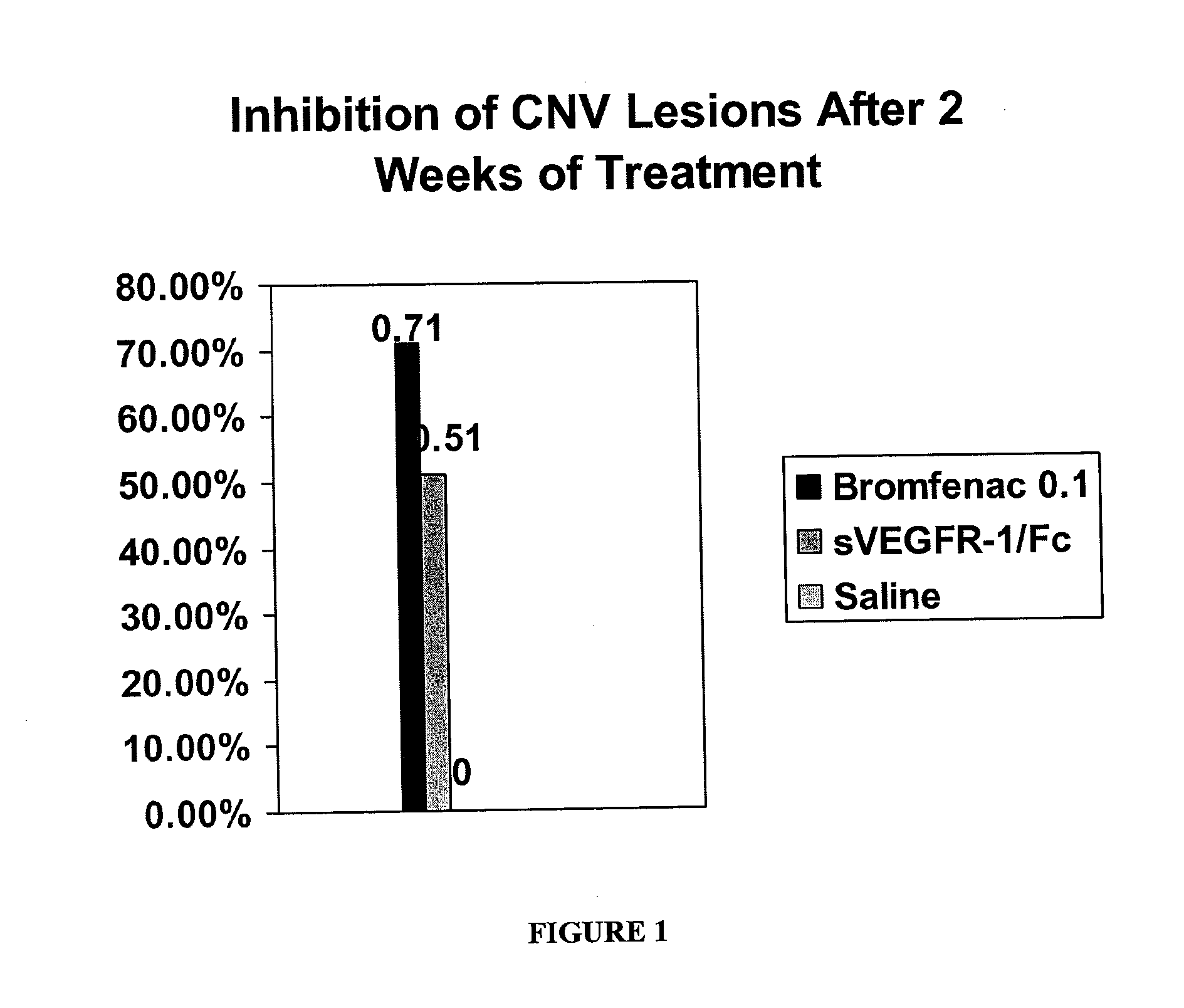Ophthalmic NSAIDS as Adjuvants
a technology of ophthalmic nsaids and adjuvants, which is applied in the direction of biocide, drug composition, peptide/protein ingredients, etc., can solve the problems of rapid and severe vision loss, loss of retinal capillaries, and distortion or destruction of central vision, so as to maximize visual acuity, reduce risk, and reduce risk
- Summary
- Abstract
- Description
- Claims
- Application Information
AI Technical Summary
Benefits of technology
Problems solved by technology
Method used
Image
Examples
example 1
A Combinatory Approach in the Treatment of Ocular Angiogenic Disease Using NSAIDs and Anti-Angiogenic Therapies
[0154]Recent data in a mouse model of retinal neovascular disease, shows a beneficial effect of bromfenac ophthalmic solution when given topically to mice with a laser induced angiomatous retina. As shown in FIG. 1, the anti-angiogenic effect produced by bromfenac was greater than that achieved with a soluble VEGF receptor administered intravitreally. FIG. 1 illustrates the inhibition of choroidal neovasularization (CNV) lesions after 2 weeks of treatment with topically applied bromfenac ophthalmic solution 0.1% (BF) on mice with CNV induced by laser photo coagulation; and the effect of BF 0.1% with vascular endothelial growth factor (VEGF)-neutralizing protein, recombinant murine soluble receptor 1 / Fc chimeric protein (sVEGFR-1 / Fc). The study shows that the area of choroidal neovascularization was reduced 71% by bromfenac treatment, compared to 51% with the soluble murine ...
PUM
| Property | Measurement | Unit |
|---|---|---|
| molecular weight | aaaaa | aaaaa |
| molecular weight | aaaaa | aaaaa |
| pH | aaaaa | aaaaa |
Abstract
Description
Claims
Application Information
 Login to View More
Login to View More - R&D
- Intellectual Property
- Life Sciences
- Materials
- Tech Scout
- Unparalleled Data Quality
- Higher Quality Content
- 60% Fewer Hallucinations
Browse by: Latest US Patents, China's latest patents, Technical Efficacy Thesaurus, Application Domain, Technology Topic, Popular Technical Reports.
© 2025 PatSnap. All rights reserved.Legal|Privacy policy|Modern Slavery Act Transparency Statement|Sitemap|About US| Contact US: help@patsnap.com



